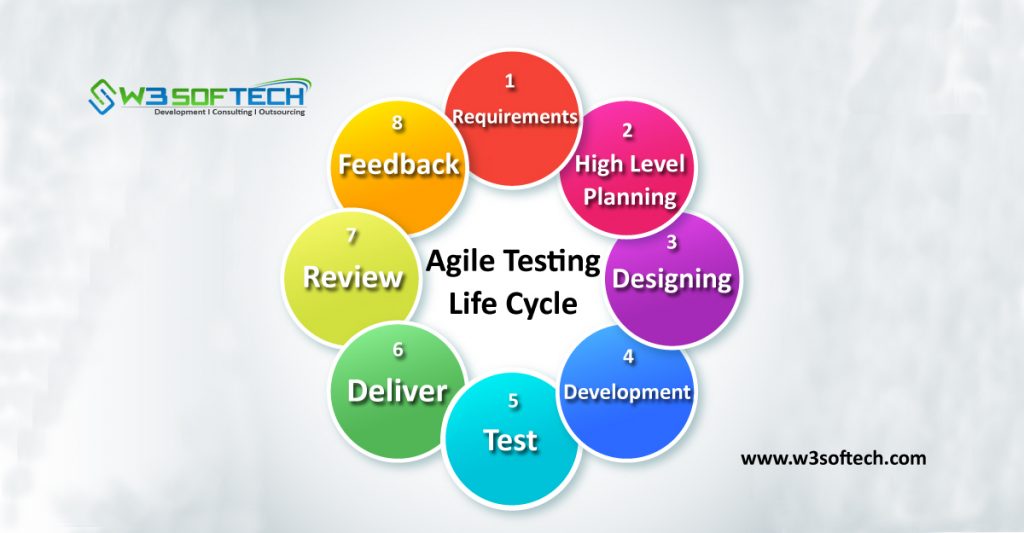Agile Testing:
Agile Testing is a process of software testing which follows the agile software development principles. It is non-sequential but to
Agile Model vs. Waterfall Model:
Agile Model is used while working with an agile methodology and the waterfall model is adopted from a waterfall development approach. Both are different methods of software development process even though they are different but both are important based on the requirements and type of project. The major differences between the agile model and waterfall model are listed below
| Agile Model | Waterfall Model |
| Testing process of agile model is unstructured compared to waterfall model | Waterfall Model Testing process is structured with maximum planning |
| It is best suitable for small projects | It can handle all kind of projects |
| Agile Model helps to fix errors in the middle of the project as it starts with beginning of the project | In waterfall model, errors need to fix from the beginning of the project as it tests at the end of project |
| As agile testing contains short time frames it requires less documentation for testing process | Whereas waterfall testing requires big data of documentation for testing process |
| Agile testing can takes place at every stage of project development | Waterfall testing is able to begin only after completion of project development |
| Here testers can work along with developers | Here testers and developers are need to work separately |
| To analyze the project requirements testers need to maintain communication with developers | Here there is no need of any communication between developers and testers as they work separately |
| In agile model acceptance is able to perform at the end of every sprint | In waterfall model, user acceptance can perform only at the end of the project |
Agile Testing Methodology:
As there are a number of methods available for agile testing, these two plays a
Test Driven Development:
- It uses tests to direct and drive the development process to write an automated test before writing the code. There are two levels of testing available here namely Unit Testing and Acceptance Testing
- Unit Testing comes under white-box tests which confirm developers expectation of developing the code with the help of tools usually xUnit Framework tool
- Whereas Acceptance testing comes under black-box testing which confirms the customer’s expectation of system capability with the help of tools usually FIT Tool
- It helps to run all the tests whenever new code is checked-in at all the time
Continuous Integration:
- It keeps the main development code-line clean to ensure that the whole product works correctly on the whole time to provide a high quality product
- Both tests such as Unit and Acceptance Tests are going to execute whenever any new code is checked-in to build 100% defect-free code-line
- TDD helps to make sure that your own code is correct whereas CI make sure that code-line is defect-free without any regression
Advantages and Disadvantages of Agile Model:
| Advantages | Disadvantages |
| It helps to make good communication between testers and developers | Need highly skilled testers and developers to analyze the project requirements |
| Agile Model consumes less money and time | Only suitable for small projects |
| It is very flexible to use and easily adaptable to changes | This |
| Any changes can made in the middle of development process | Sometimes it may get failed due to lack of software deliverables |
Agile Testing Life Cycle:
Requirements:
Gathering basic requirements for a project to move it into an agile development process. It helps to make perfect planning to start a project
High level planning:
Make perfect planning to begin a project with the help of testers and developers
Designing:
Make sure to establish perfect communication between testers and developers so that we get the
Development:
After successful completion of designing, we need to move the project into development for better output
Test:
Here is the major step takes place which is Test. The complete project needs to be tested to make it defect-free
Deliver:
Need to deliver the project to customer within the required period of time
Review:
After successful delivery once review the working practices of the project and make sure it is fine
Feedback:
Finally, take feedback from the customer to improve the next deployment cycle

Agile Testing Tools:
Top 20 agile testing tools that are most widely used
- CruiseControl
- Gretel
- Hudson
- JAZZ
- Jester
- Jira
- JMeter
- Junit
- JunoOne
- Nunit
- Pivotal Tracker
- Practitest
- QMetry
- qTest Scenario
- Selenium WebDriver
- SoapUI
- TestCocoon
- TestRail
- VersionOne
- Zephyr